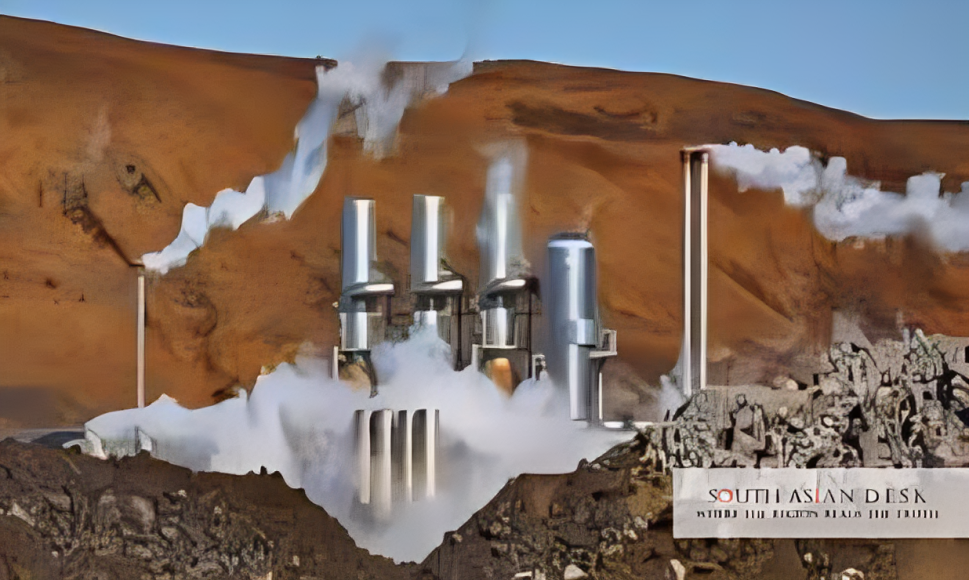India’s Ministry of New and Renewable Energy has unveiled a groundbreaking national framework, poised to harness the country’s vast subterranean heat reserves amid escalating climate imperatives.
The Indian government, through the Ministry of New and Renewable Energy (MNRE), launched the nation’s first comprehensive policy on geothermal energy on Monday, September 15, 2025, in New Delhi, to tap into untapped resources across 10 geothermal provinces, bolstering the 2070 net-zero emissions target via fiscal incentives and public-private collaborations.
Why it Matters for South Asia
Geothermal energy in India 2025 represents a pivotal shift towards sustainable power in a region vulnerable to climate extremes, where India’s advancements could inspire neighbouring nations like Pakistan and Bangladesh to explore similar baseload renewables, enhancing collective energy security and reducing reliance on fossil fuels amid shared Himalayan geological assets.
Geothermal Energy in India 2025: Key Objectives and Vision
The launch of the India geothermal national policy marks a strategic endeavour to integrate geothermal resources into India’s renewable energy matrix. With global geothermal capacity at 15.4 GW by the end of 2024—dominated by the United States, Indonesia, and the Philippines—India’s initiative aims to position the country as a significant player. The policy’s vision is to establish geothermal energy as a cornerstone of the renewable landscape, contributing to climate commitments and energy independence.
Under the framework, MNRE serves as the nodal agency, overseeing exploration, development, and regulatory stewardship. Applicable across all stakeholders, including state governments and private entities, the policy aligns with existing legislation such as the Mines and Minerals (Development and Regulation) Act 1957 and the Electricity Act 2003. It emphasises sustainable practices, with periodic reviews based on stakeholder input to ensure adaptability.
India’s geothermal potential stems from its diverse geology, featuring 381 hot springs identified by the Geological Survey of India since 1973, with surface temperatures ranging from 35°C to 89°C and reservoir temperatures up to 200°C in Himalayan zones. These resources, primarily medium- to low-enthalpy, suit direct applications like ground source heat pumps for heating and cooling, alongside emerging uses in agriculture and desalination.
India Geothermal National Policy: Identified Provinces and Sites
The policy delineates 10 geothermal provinces: Himalayan, Naga-Lusai, Andaman-Nicobar Islands, Son-Narmada-Tapi, West Coast, Cambay Graben, Aravalli, Mahanadi, Godavari, and South Indian Cratonic. High-potential rift basins, driven by tectonic activity, hold promise for enhanced geothermal systems.
Prominent sites include Puga and Chumathang in Ladakh, Manikaran in Himachal Pradesh, Tapoban in Uttarakhand, and Polok in Sikkim, extending to regions in Haryana, Bihar, Gujarat, and Telangana. The government plans a central data repository, collaborating with the Ministries of Mines, Earth Sciences, and Petroleum and Natural Gas, to share drilling data from abandoned oil wells—facilitating their repurposing for geothermal power.
This geothermal energy in India 2025 push addresses upfront exploration risks and capital-intensive drilling, where costs vary by site and technology, such as binary cycle plants. Yet, with no fuel expenses and capacity factors exceeding 80 per cent, it offers reliable baseload power, emitting 99 per cent less carbon dioxide than fossil fuels.
Incentives and Support Mechanisms in the India Geothermal National Policy
To catalyse investment, the policy introduces robust fiscal and financial incentives. These encompass import duty exemptions on equipment, GST waivers, tax holidays, accelerated depreciation, and property tax relief for heat pump users—pending approvals from relevant departments. Viability gap funding and concessional loans via institutions like the Indian Renewable Energy Development Agency will mitigate risks.
A cornerstone is the allowance for 100 per cent foreign direct investment, alongside joint ventures between geothermal developers and oil, gas, or mineral firms. This fosters repurposing of idle infrastructure, including pipelines, for up to 30 years, with extensions tied to resource viability.
The policy promotes international collaborations, technology transfers, and research under MNRE’s Renewable Energy Research Programme. Centres of Excellence will drive capacity building, while a single-window clearance system streamlines state-level approvals. Priority funding targets northeastern and special category states, emphasising indigenous technologies to curb imports.
Geothermal energy in India 2025 thus extends beyond electricity to district heating, geo-tourism, and industrial decarbonisation, aligning with broader renewable goals that saw record capacity additions in 2024.
Challenges and Strategic Goals
Despite advantages like 24/7 availability and grid stability, challenges persist in high initial costs and site-specific feasibility. The India geothermal national policy counters these through shared exploration risks between government and developers, alongside pilot projects for techno-economic assessments.
Goals include enhancing research in drilling and reservoir management, deploying heat pumps for building efficiency, and building a public-private ecosystem. By incorporating global best practices via partnerships with multilateral donors, India aims to accelerate deployment.
Background
Geothermal exploration in India dates to the 1970s, with early assessments by the Geological Survey of India highlighting Himalayan hot springs. Previous drafts, such as a 2015 consultation, laid groundwork, but the 2025 policy is the first formal national framework, responding to surging renewable demands and the 2070 net-zero pledge.
What’s Next for Geothermal Energy in India 2025
Looking ahead, MNRE will issue guidelines and standard operating procedures by early 2026, targeting initial pilot conversions of abandoned wells. Progress reports on resource mapping and project milestones will track advancements, potentially scaling geothermal contributions to gigawatt levels by decade’s end and solidifying geothermal energy in India 2025 as a resilient renewable pillar.
Published in SouthAsianDesk, September 16th, 2025
Follow SouthAsianDesk on X, Instagram, and Facebook for insights on business and current affairs from across South Asia.






